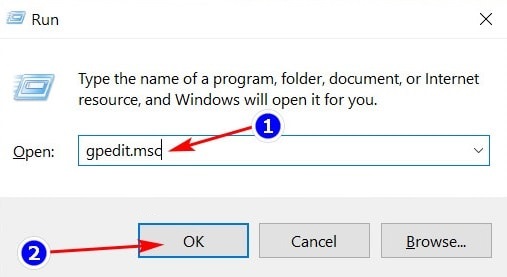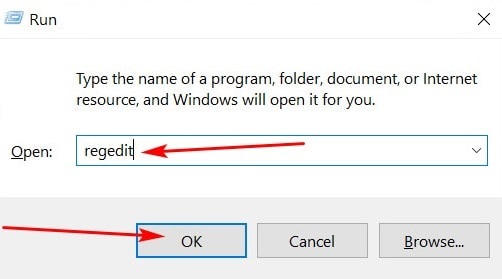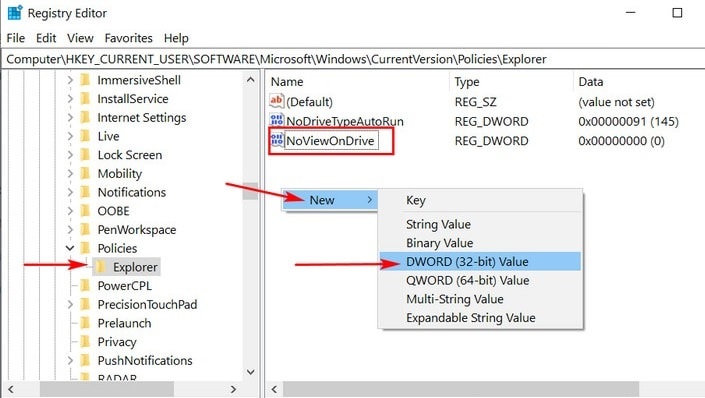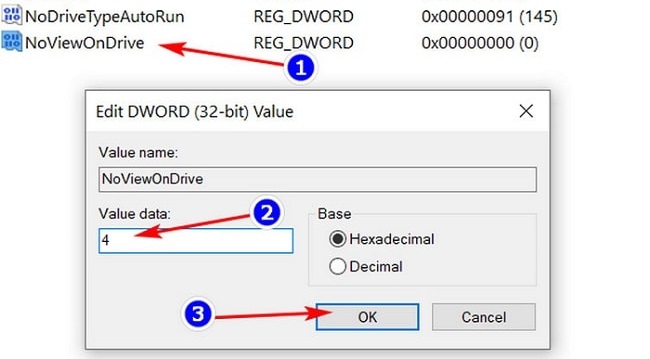How to block access to a computer's hard drive on Windows 10
Hard drive (HDD / SDD ) is the most popular data storage device today, especially on desktop computers, laptops, surveillance camera systems in buildings, apartments . And the capacity of the drive Hard is also quite large now, not as narrow as it used to be.
And as you have all seen, right after the installation of Windows is complete (for new computers), users tend to divide the hard drive into multiple partitions with smaller capacity, so what is the reason?
The first is that it makes it easier for the owner of that computer to manage their data, each partition has its own data type . The second is to limit data loss compared to sharing all of the data. on a C: drive (the drive that contains the operating system).
Because if you do not divide your hard drive into many smaller partitions, your hard drive is of course just a single partition.
And when there is a Win error, or for some reason you can not boot into Windows , the risk of data loss is very high. Especially for those who are not knowledgeable about computer rescue.
However, it is an option for personal computers only. If you are managing one or more public computers, for example, dividing the hard drive is not enough.
So what's the solution ? Well, the answer is to block access to the hard drive on Windows 10 and perform hard drive freezing !
I. Instructions to block access to the computer hard drive
This article I guide on Windows 10, but you can apply to Windows 7, 8 and 8.1 too!
Blocking users from accessing the hard drive is a very useful way to protect and prevent others from viewing, deleting and editing data on any one drive, especially the partition where Windows 10 is installed. .
Although you can choose to hide the partitions on Windows , they will somehow still be able to access the drives.
But with this method, once enabled, no User, except the User Administrator, can access the hard drives that you have blocked.
To do this on Windows operating systems, we have 2 options, one is to use the familiar Registry Editor and the second is the Local Group Policy Editor.
And as usual, I will share with you both ways for you to have more options to handle.
Method # 1: Use Local Group Policy Editor to block users from accessing the hard drive on Windows 10
This is a tool that allows you to customize a lot of things and interfere deeply into the Windows system.
However, this method only applies to Windows 10 Pro, Education, Enterprise Edition, and Windows 10 Home cannot, because some components including Local Group Policy Editor have been omitted from this version.
For those of you using Windows 10 Home, please use method # 2 below .
Perform:
+ Step 1: First, open the Run dialog box by pressing Windows + R => enter the command gpedit.msc => then press Enter to quickly access Local Group Policy Editor on Windows 10.
Alternatively, you can also run this command directly in the Taskbar search box (Windows + S) and it will also open the Local Group Policy Editor for you.

+ Step 2: The Local Group Policy Editor window appears, navigate to the File Explorer folder in the following path, using the tree on the left:
User Configuration> Administrative Templates> Windows Components> File Explorer
+ Step 3: When you get here, scroll down and look in the list of policies to the right of a policy called Prevent access to drives from My Computer => click on it and then click on policy setting or you can also double click Click on this policy to enable functionality to block access to the drive.

+ Step 4: In this window, switch the status from Not Configured to Enabled to enable the feature of blocking drive access on Windows 10 => Then you can click Apply to save and close this window. already.

By default it will block access to all hard drive partitions on Windows 10 - Restrict all drives.
But if you just want to block an arbitrary drive like drive C: for example, don't immediately close the window above, but click on the line Restrict all drivers in the Pick one of the following combinations => select again to Restrict C drive only => then click OK to finish.
As for the options like Restrict A, B, D drive only, I still do not know which drive it blocks, you can try to comment on the results below the comments. Thank you in advance!
When done, you do not need to restart the computer but it will take effect, you can open File Explorer (Windows + E) up => and click on the blocked hard drive partition, you will receive the message. Inaccessible error due to restricted permissions by Administrator as shown below.
Regardless of whether you use any other file manager to replace File Explorer, you will see this message.

Method # 2: Use Registry Editor to block users from accessing the drive on Windows 10
Although Registry Editor is very powerful, it can deeply interfere with the Windows system, but also contains a lot of risk of operating system error if you do it wrongly.
However, if you are using Windows 10 Home and want to block users from accessing the drive, you have no choice but to use this tool.
Therefore, you should backup the entire Windows 10 Registry before following the instructions in this article.
Yes. That is for you to carefully follow the instructions, but if you follow each step, step by step, it is very difficult to make mistakes.
Perform:
+ Step 1: You continue to open the Run dialog box (Windows + R) => enter the command regedit => then Enter to access Registry Editor on Windows 10.
Similarly, you can also run this command directly or search with the keyword regedit in Windows Search (Windows + S) to open Registry Editer like # 1 above.

+ Step 2: Next, you access the Explorer folder key in the Registry under the path:
HKEY_CURRENT_USERSOFTWAREMicrosoftWindowsCurrentVersionPoliciesExplorer
With Registry Editor you do not need to use the tree on the right, but you can directly paste this path in the address bar => then Enter is okay.
If you do not see the address bar as shown below, click on the word View and select the line Adress Bar to show again.
+ Step 3: By default, this Explorer folder has only one key, NoDriveTypeAutoRun => now right-click on any empty area of the right pane => then select New => select DWORD (32-bit) Value to create a new key and then name it NoViewOnDrive to continue.
NOTE: If you do not have the right name or wrong name, you do not have to create a new key, just right click on the newly created key => and select Rename.

+ Step 4: After creating the NoViewOnDrive key, right click on it => and choose Modify . or faster, double-click on this key to edit the value.
The Edit Value window appears, now edit the value in the Value data box from 0 to 4 if you just want to block C: drive or 0 to 3 if you want to block access to the entire existing hard drive partition, the values the rest remains => and press OK to save.

Usually, when you're done editing the Registry, you'll need to restart your computer for the changes you made to take effect.
But this is not the case, these edits will take effect as soon as you press the OK button to save.
When you access the hard drive that you have blocked, you will receive the same message as when using the Local Group Policy Editor to block only.
II. Conclude
So I have just finished showing you how to block users from accessing any hard drive partition or block access to the entire hard drive.
This is really useful for you to protect the data on the drive, preventing bad guys from destroying.
Good luck !
You should read it
- How to format a hard drive into NTFS in Linux
- Instructions to mount the hard drive into a folder on Windows 10
- Disk Management access in Windows 7 and Windows 8
- Instructions for using Clonezilla to copy Windows hard drives
- 11 things to do when using SSD hard drive on Windows 10
- Know about bad sectors on your hard drive
- 6 software to monitor Windows 10 hard drive activity
- How to Partition a Hard Drive in Windows 8
May be interested
- Know about bad sectors on your hard drive
 hard disk after a period of use will encounter some signs such as failing to boot, the computer hangs while the hard drive signal light is still on continuously ... that may be the indication that the drive your hard drive may have a bad sector error. therefore, you should regularly check the health status of your hard drive and always backup in case of data loss due to bad sectors hard drive.
hard disk after a period of use will encounter some signs such as failing to boot, the computer hangs while the hard drive signal light is still on continuously ... that may be the indication that the drive your hard drive may have a bad sector error. therefore, you should regularly check the health status of your hard drive and always backup in case of data loss due to bad sectors hard drive. - 6 software to monitor Windows 10 hard drive activity
 too many simultaneous operations on the hard drive can slow down the system and deplete laptop battery, so sometimes you should monitor hard drive activity.
too many simultaneous operations on the hard drive can slow down the system and deplete laptop battery, so sometimes you should monitor hard drive activity. - How to Partition a Hard Drive in Windows 8
 partitioning divides a hard drive into two or more smaller, separate drives. the larger a drive is, the longer it can take for the computer to retrieve data on that drive. partitioning a large drive can speed up the drive access time....
partitioning divides a hard drive into two or more smaller, separate drives. the larger a drive is, the longer it can take for the computer to retrieve data on that drive. partitioning a large drive can speed up the drive access time.... - How to fix portable hard drive not recognized when connected to computer
 summary of reasons why the hard drive is not recognized when plugged into the pc and instructions for you to fix the error of the laptop not recognizing the external hard drive using windows 10 software in a simple way.
summary of reasons why the hard drive is not recognized when plugged into the pc and instructions for you to fix the error of the laptop not recognizing the external hard drive using windows 10 software in a simple way. - What is a fragmented hard drive? The cause and how to fix it
 fragmentation of the hard drive is a long-standing concept on computers. basically, it is the phenomenon of data of files scattered all over the drive.
fragmentation of the hard drive is a long-standing concept on computers. basically, it is the phenomenon of data of files scattered all over the drive. - Computer hard drive is fast, why?
 a hard drive is an important component of a computer, all user data such as windows operating system or personal data is stored on the hard drive and they are always accessed regularly. typically, the average life of a hard drive on a desktop computer is about 6 years. however, there are cases that only 1-2 years of use is broken. so what causes the computer hard drive to crash?
a hard drive is an important component of a computer, all user data such as windows operating system or personal data is stored on the hard drive and they are always accessed regularly. typically, the average life of a hard drive on a desktop computer is about 6 years. however, there are cases that only 1-2 years of use is broken. so what causes the computer hard drive to crash? - Dissection of hard drive components
 a hard drive (commonly referred to as hard disk, hard drive, or hdd) is a non-volatile storage device that stores digital data encoded on hard disk (platter) disks quick rotation on the magnetic surface.
a hard drive (commonly referred to as hard disk, hard drive, or hdd) is a non-volatile storage device that stores digital data encoded on hard disk (platter) disks quick rotation on the magnetic surface. - 25 interesting things about hard drives you may not know
 all large and small computers have different types of hard drives and most of us know that it's part of the hardware that stores software, music, videos and even the operating system. but maybe there are many things about hard drives that you don't know, let's discover 25 interesting things later.
all large and small computers have different types of hard drives and most of us know that it's part of the hardware that stores software, music, videos and even the operating system. but maybe there are many things about hard drives that you don't know, let's discover 25 interesting things later. - Top 3 best and most effective hard drive freezing software on Windows
 freezing hard drives can have a lot of effects, especially for computers in public places. to better understand this operation as well as the software that can be supported, please follow the article for details!
freezing hard drives can have a lot of effects, especially for computers in public places. to better understand this operation as well as the software that can be supported, please follow the article for details! - Instructions on how to map network drives in Windows 11
 accessing files from the local hard drive on the system is one of the simplest and most basic tasks for computer users. but what if you want to access files located on another pc's hard drive?
accessing files from the local hard drive on the system is one of the simplest and most basic tasks for computer users. but what if you want to access files located on another pc's hard drive?










 How to delete the Ansel folder on the computer
How to delete the Ansel folder on the computer How to change a password on a Chromebook
How to change a password on a Chromebook How to set the opening sound on Chromebook
How to set the opening sound on Chromebook Experience 7 old operating systems right on the browser
Experience 7 old operating systems right on the browser How to check the configuration of the Chromebook
How to check the configuration of the Chromebook Create an audible alert when the GPU temperature gets too high
Create an audible alert when the GPU temperature gets too high